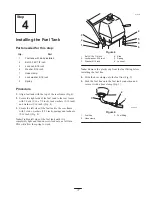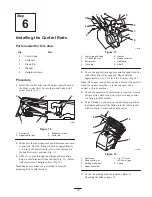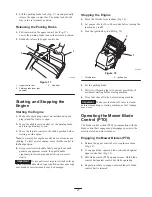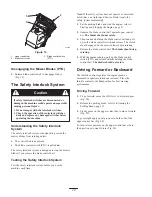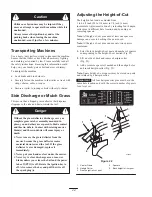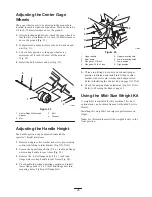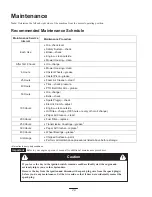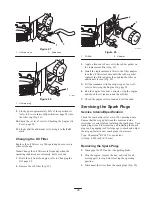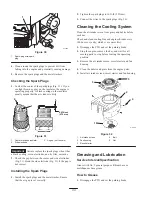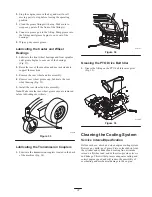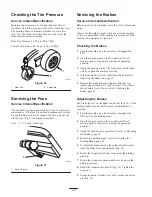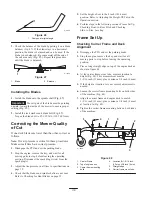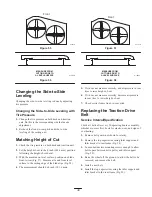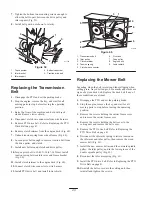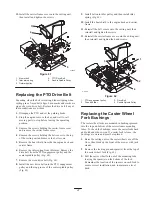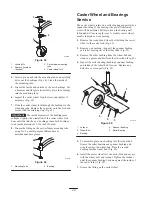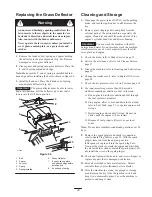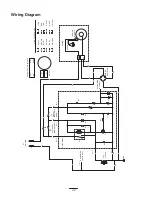
30
m–7453
1
Figure 30
1.
Spark-plug wire/spark
plug
4. Clean around the spark plugs to prevent dirt from
falling into the engine and potentially causing damage.
5. Remove the spark plugs and the metal washers.
Checking the Spark Plugs
1. Look at the center of the spark plugs (Fig. 31). If you
see light brown or gray on the insulator, the engine is
operating properly. A black coating on the insulator
usually means that the air cleaner is dirty.
0.030 inch
(0.75 mm)
2
3
1
Figure 31
1.
Center electrode insulator
2.
Side electrode
3.
Air gap (not to scale)
Important
Always replace the spark plugs when it has
a black coating, worn electrodes, an oily film, or cracks.
2. Check the gap between the center and side electrodes
(Fig. 31). Bend the side electrode (Fig. 31) if the gap is
not correct.
Installing the Spark Plug
s
1. Install the spark plugs and the metal washer. Ensure
that the air gap is set correctly.
2. Tighten the spark plugs to 16 ft-lb (22 N
m).
3. Connect the wires to the spark plugs (Fig. 30).
Cleaning the Cooling System
Clean the air intake screen from grass and debris before
each use.
Check and clean cooling fins and engine shrouds every
100 hours or yearly, which ever comes first.
1. Disengage the PTO and set the parking brake.
2. Stop the engine, remove the key, and wait for all
moving parts to stop before leaving the operating
position.
3. Remove the air intake screen, recoil starter and fan
housing.
4. Clean the debris and grass from the engine parts.
5. Install air intake screen, recoil starter and fan housing.
3
2
4
1
m–7450
5
Figure 32
1.
Air intake screen
2.
Fan housing
3.
Recoil starter
4.
Bolt
5.
Nut
Greasing and Lubrication
Service Interval/Specification
Grease with No. 2 general purpose lithium base or
molybdenum base grease.
How to Grease
1. Disengage the PTO and set the parking brake.


